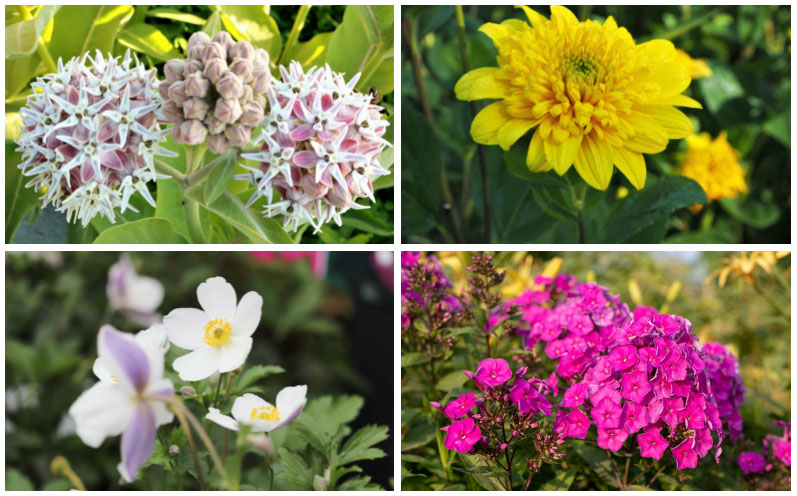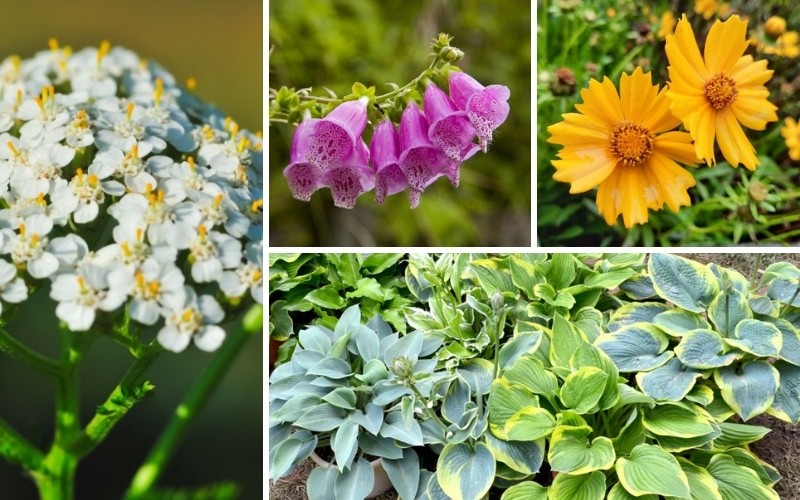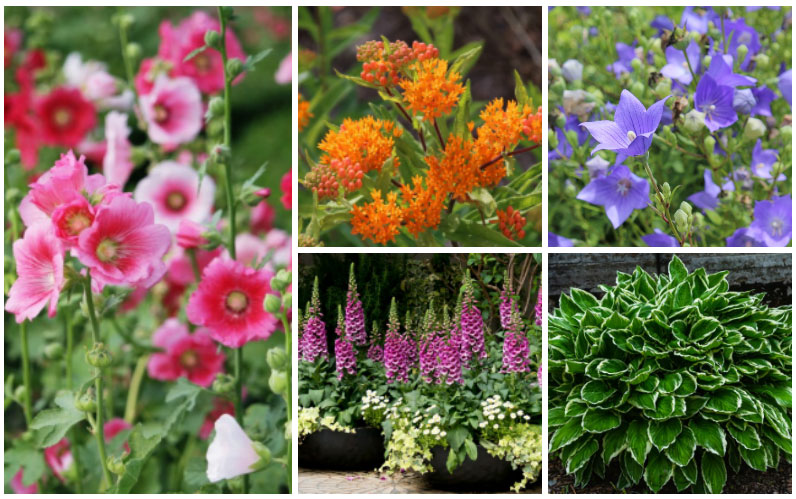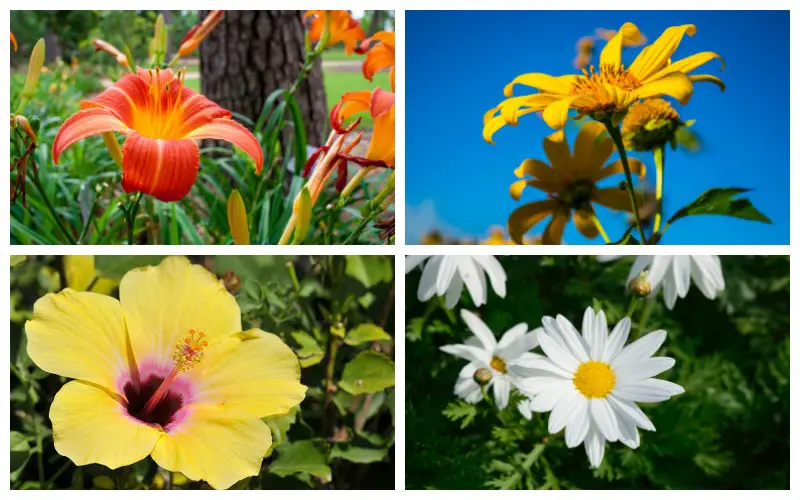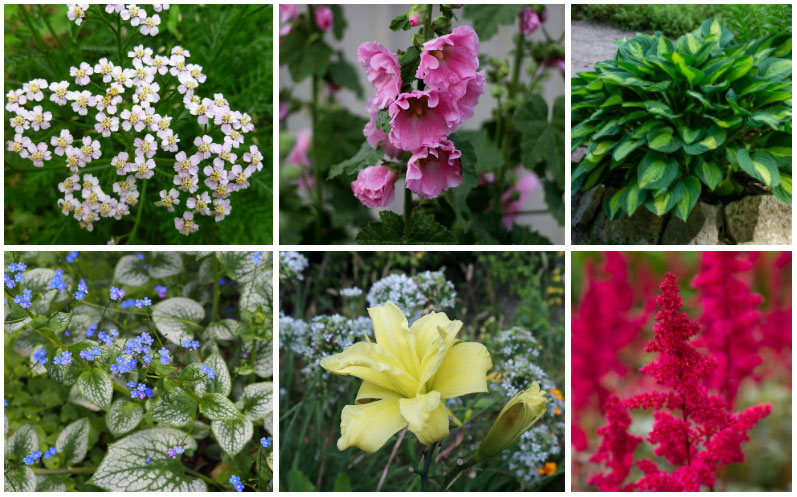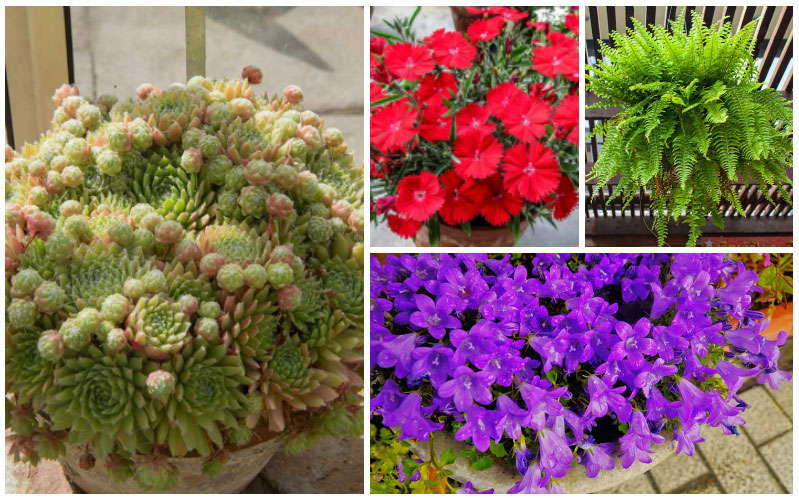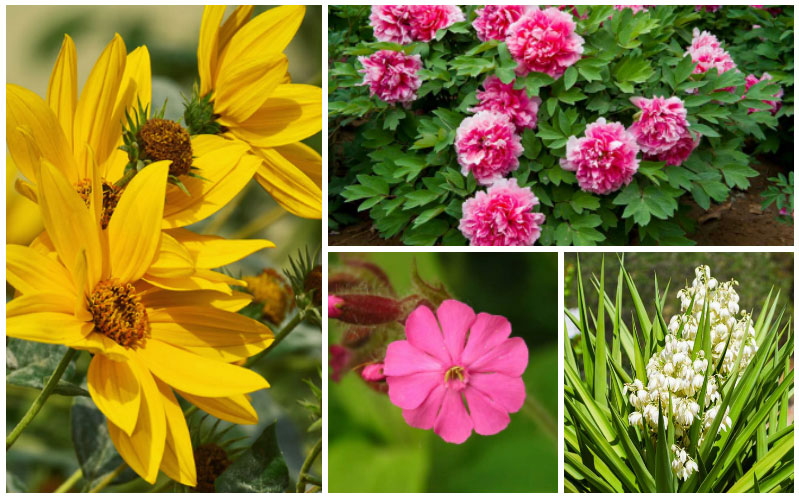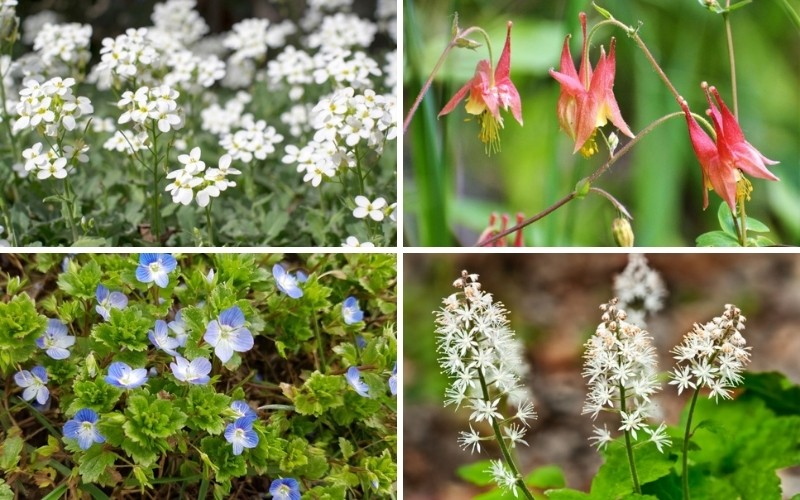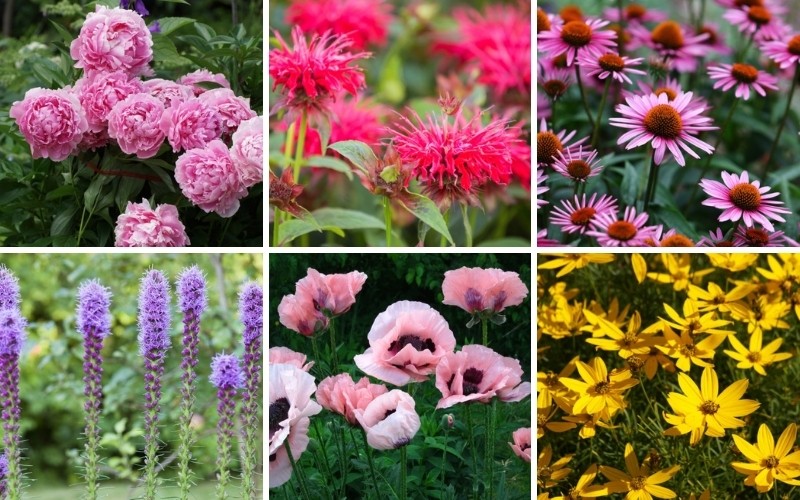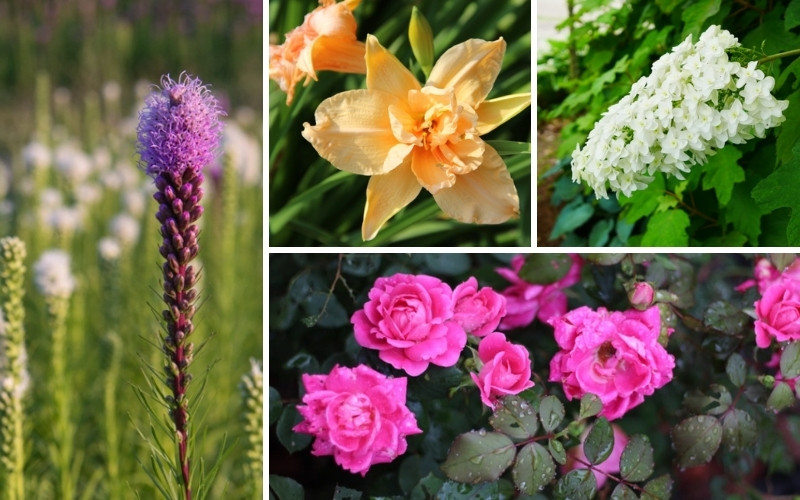
The state of Mississippi encompasses USDA plant hardiness zones 7a through 9a making it suitable for a wide range of perennials. Some perennials that thrive in zones 9a may struggle in cooler winters in 7a, but this list of perennials should perform well throughout the state of Mississippi.
The USDA hardiness zones are listed, but be aware that hardiness can vary even among cultivars of the same plant. It is wise to check the plant identification label to determine if the variety you are choosing will do well in your perennial bed.
Oakleaf Hydrangea (Hydrangea quercifolio)
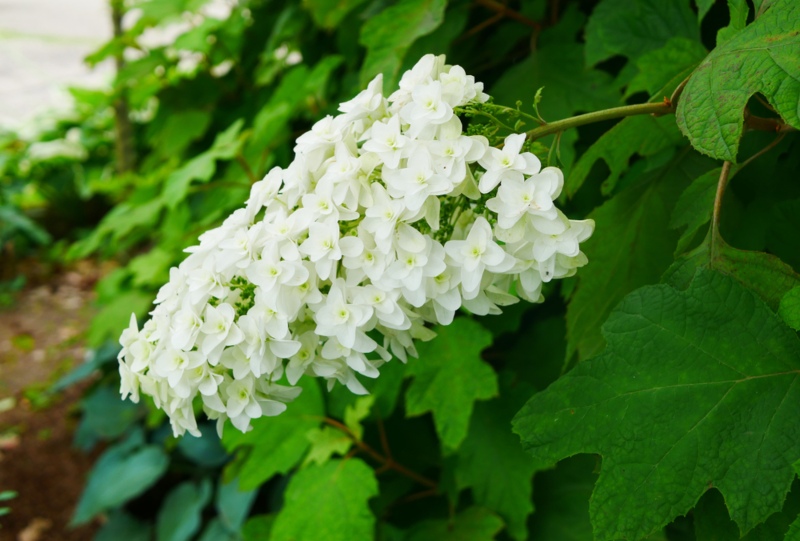
Okaleaf hydrangea produces massive double blooms that start out white and gradually transition to a lovely pink. Its long-lasting blooms begin to open by midsummer and put on a show for weeks. It grows to heights of 5 to 8 feet with a similar spread. It prefers humus-rich soil that is evenly moist and thrives in full sun to partial shade. It is hardy in USDA plant hardiness zones 5 through 9.
Black-Eyed Susan (Rudbeckia hirta)
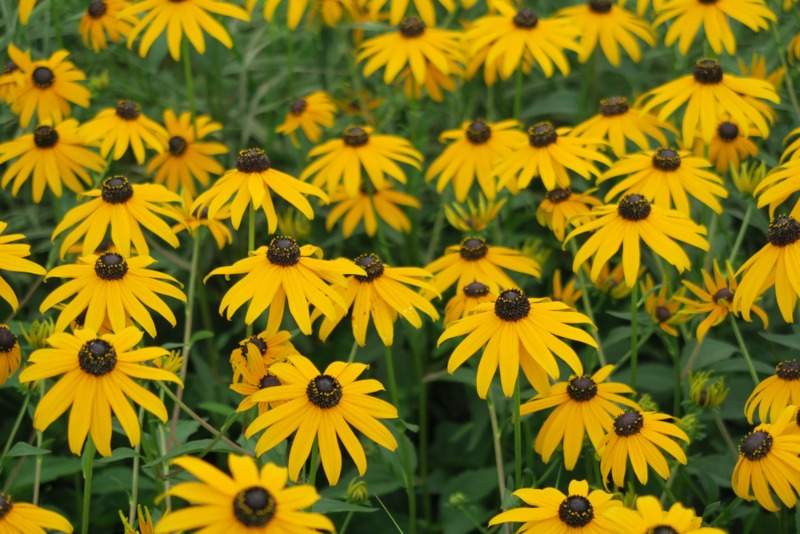
These showy flowers feature golden yellow petals with a dark eye in the center. They bloom from midsummer until well into the fall and attract bees and butterflies. They grow to heights of 3 to 4 feet with an equal spread. Black-Eyed Susan prefers full sun but will grow in partial shade. It thrives in nearly any soil as long as it drains well. It naturalizes easily and is ideal for the middle of flower beds. It is hardy in USDA plant hardiness zones 4 through 9.
Knock Out Rose (Rosa ‘Radazz’)
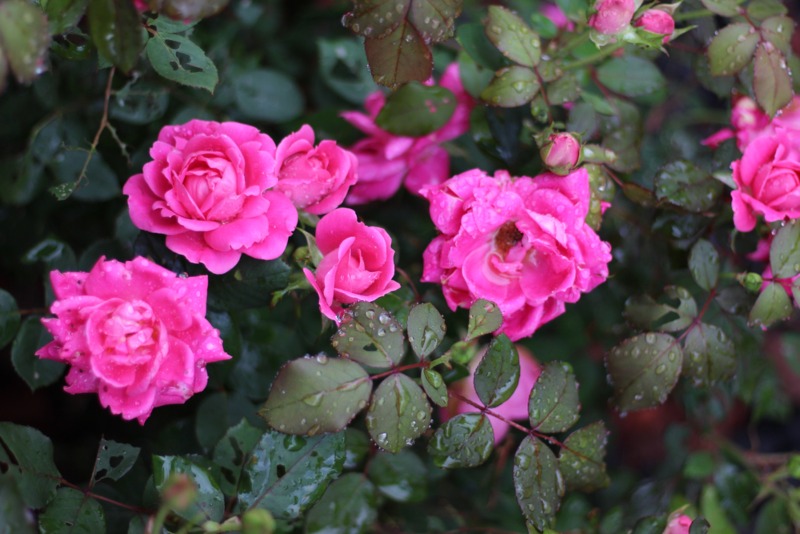
This amazing rose produces a profusion of cherry-red blooms and just keeps on blooming from early summer into the fall. It grows to heights of 5 feet with a similar spread. Make sure to leave plenty of room for this rose bush to grow as it like air circulation and room for its roots to spread. It prefers full sun in average, well drained soil. This knock out rose is hardy in USDA plant hardiness zones 5 through 11.
Yarrow (Achillea)
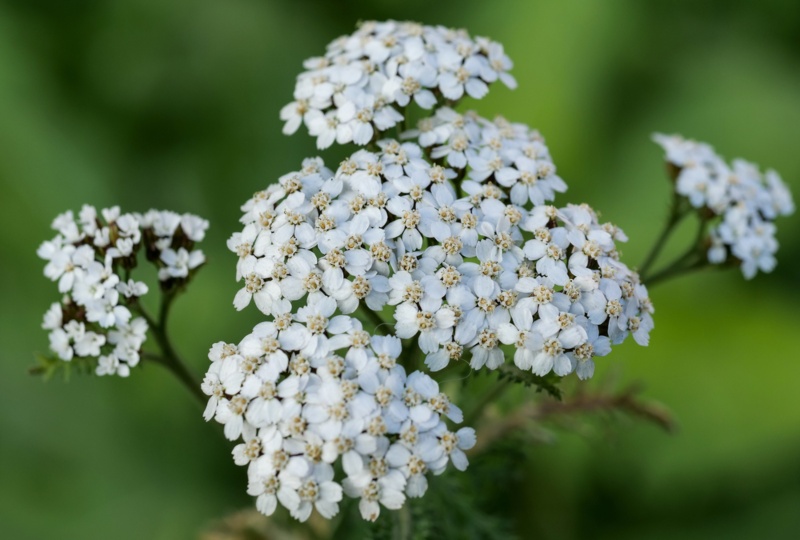
Yarow is a delightful spring and summer plant that produces flattened flower heads covered with hundreds of tiny flowers. Bloom colors range from white and pink to many shades of yellow, orange and gold and can even be deep red, depending on the cultivar. Yarrow grows to heights of 1 to 3 feet with an equal spread. It attracts bees and butterflies and makes a great cut flower, too. It prefers full sun to partial shade in average well-drained soil, but will tolerate some drought. It is hardy in USDA plant hardiness zones 3 through 9, but may tend to get leggy in zone 9.
Asters (Aster spp.)
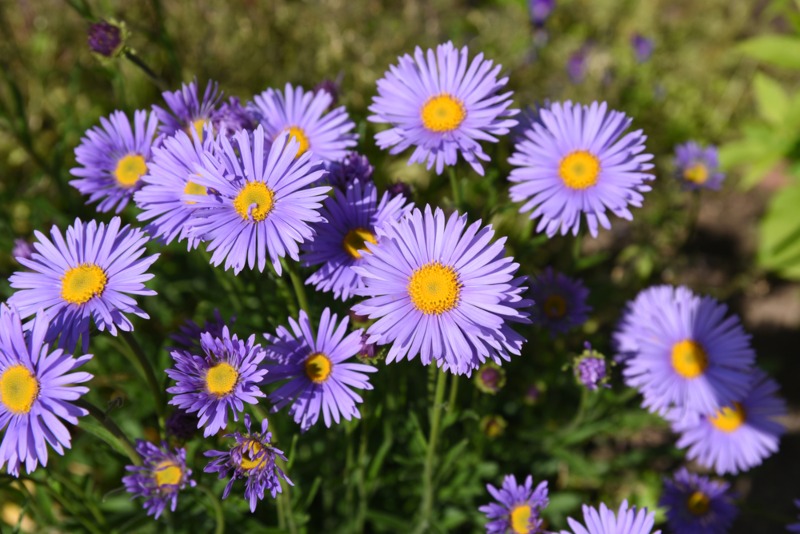
Asters are a wonderful choice for late summer and fall color. These hardy plants produce an abundance of frilly, daisy-like blooms that attract bees and butterflies. Colors and size range from 12 inch varieties to those that grow to 5 feet tall. Colors run the gambit from pastel blues, purples and pinks to bold shades of purple, red and blue. They refer full sun to partial shade and grow well in nearly any soil as long as it drains well. They are hardy in USDA plant hardiness zones 3 through 10, depending on the cultivar.
Cardinal Flower (Lobelia cardinalis)
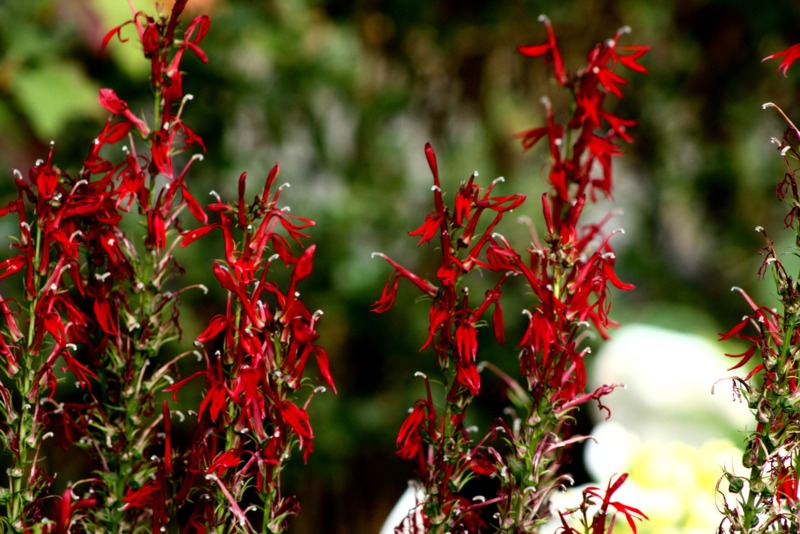
The cardinal flower produces tall spires covered with large tubular red, white or rose colored flowers. It grows to heights of 2 to 4 feet with a slightly smaller spread of 1 to 2 feet. Cardinal flower can be planted as a specimen plant or added to the middle of the flowerbed. It prefers full sun to partial shade and benefits from afternoon shade in warmer climates. It likes organic soil that is evenly moist and does not dry out completely. It is hardy in USDA plant hardiness zones 3 through 9.
Lanceleaf Coreopsis (Coreopsis lanceolata)
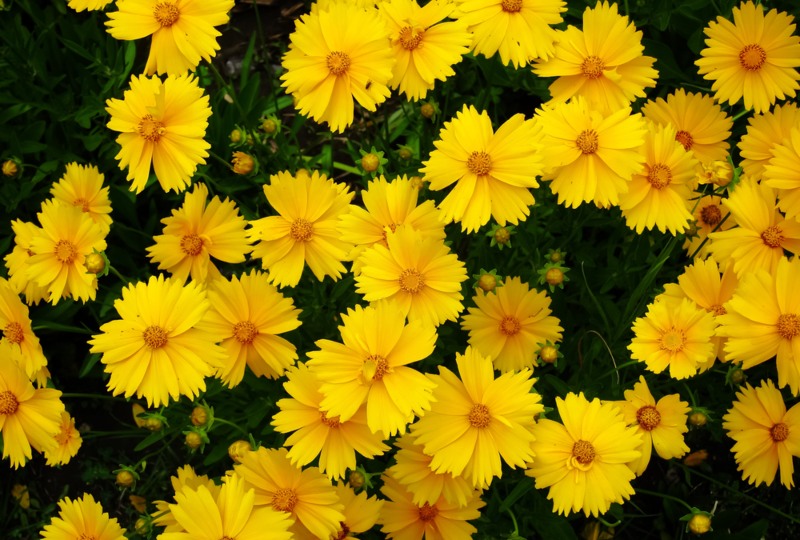
This coreopsis produces masses of daisy-like, yellow flowers with delicately toothed edges. The flowers are held above a tuft of green foliage on a slender stem. They bloom from spring to early summer. Deadheading the spent blooms will extend the blooming season. They grow to heights of 1 to 2 feet and thrive in average to poor soil. They prefer full sun. Lanceleaf coreopsis is hardy in USDA plant hardiness zones 4 through 9.
Daylily (Hemerocallis)
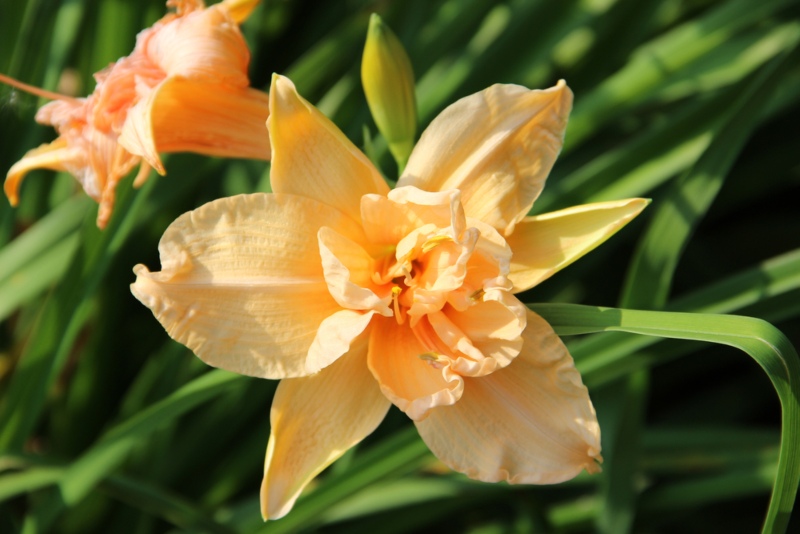
Daylilies add beauty and interest the flowerbed with their trumpet-shaped blooms in a wide range of colors. While each bloom only lasts a day, this prolific producer has you covered with an abundance of new buds and blooms every day. Daylilies are in bloom for several weeks, but you can extend the season by planting early, mid and late season bloomers. Daylilies range in height from tiny dwarf varieties of less than a foot to towering 5-foot varieties. They prefer full sun to partial shade and thrive in average well-drained soil. They are hardy in USDA plant hardiness zones 4 through 9.
Hosta (Hosta spp.)
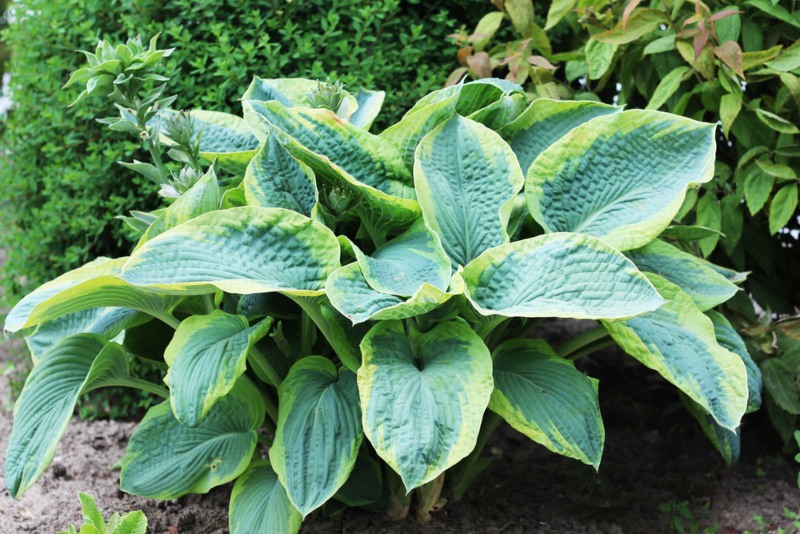
Hostas brighten the flowerbed with their impressive foliage that ranges from green or blue-green to variegated varieties edged with white or yellow. The mounding habit of hostas and their deep earthy colors make them the perfect backdrop to any color flower. They grow to heights of anywhere from 8 inches tall to an amazing 4-feet tall, depending on the cultivar. Hostas prefer partial shade, but will grow in full sun if provided some afternoon shade. They prefer moist soil, but tolerate poor or dry soil well. They are hardy in USDA plant hardiness zones 3 through 9.
Blazing Stars (Liatris)
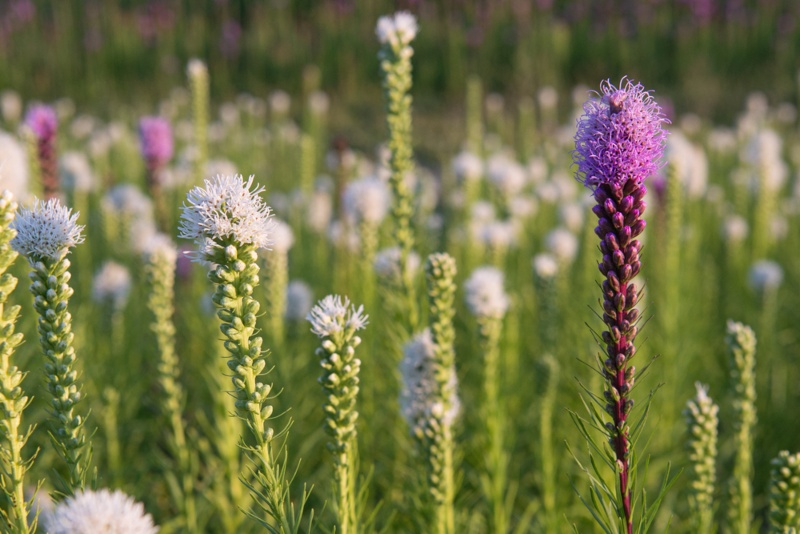
Blazing stars add height and color to the summer perennial bed with their tall spires in shades of blue, purple or purple-red. These flowers bloom on stiff, upright spires above a tuft of grass-like foliage. The flowers resemble tiny stars and give the bloom a fluffy appearance. They are sometimes called gayfeather. They grow to heights of 2 to 4 feet and spread to a foot or more. They prefer full sun and average soil. Blazing stars bloom from early to mid-summer until fall. They are hardy in USDA plant hardiness zones 3 through 9.
Conclusion
When choosing perennials for your Mississippi perennial bed, it is wise to choose flowers with varying blooming times to keep the garden alive with color all summer. While you can extend the blooming season of many perennials by deadheading the faded blooms, or cutting back foliage to force a new flush of blooms, perennials typically have a specific blooming time. Some prefer to add colorful annuals to the perennial bed to create long-lasting color for the entire summer.





